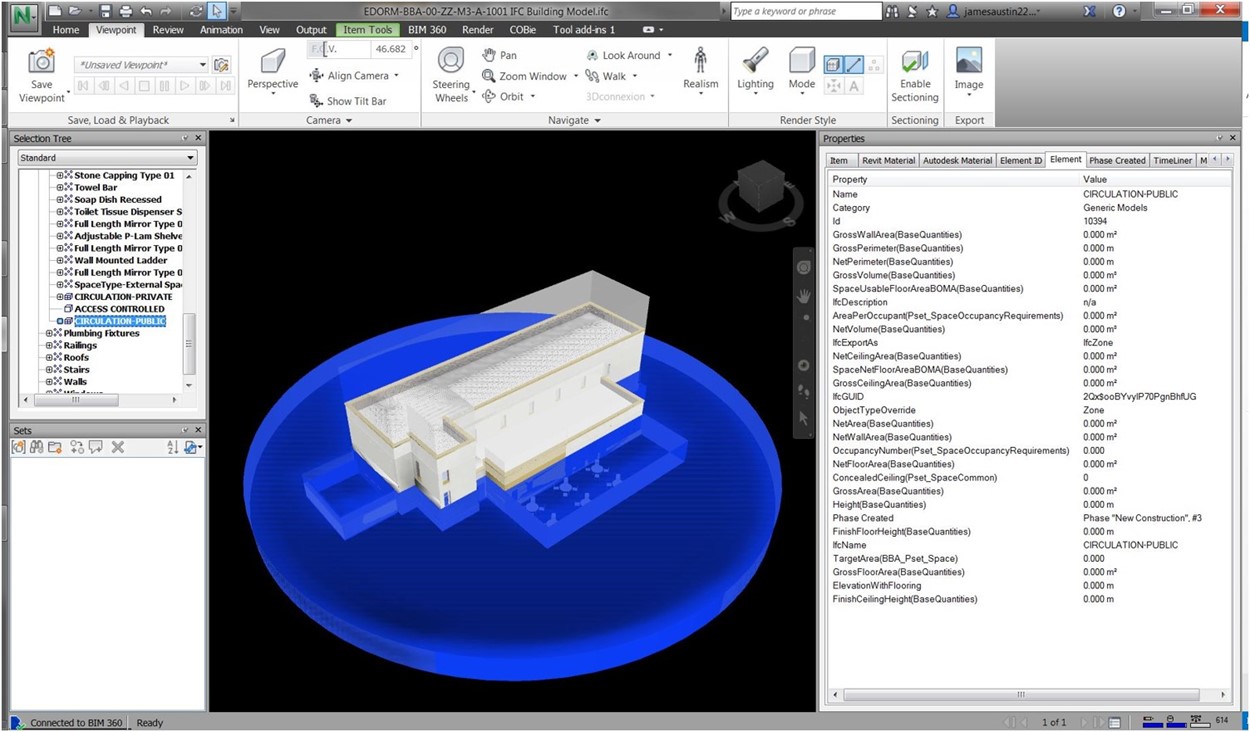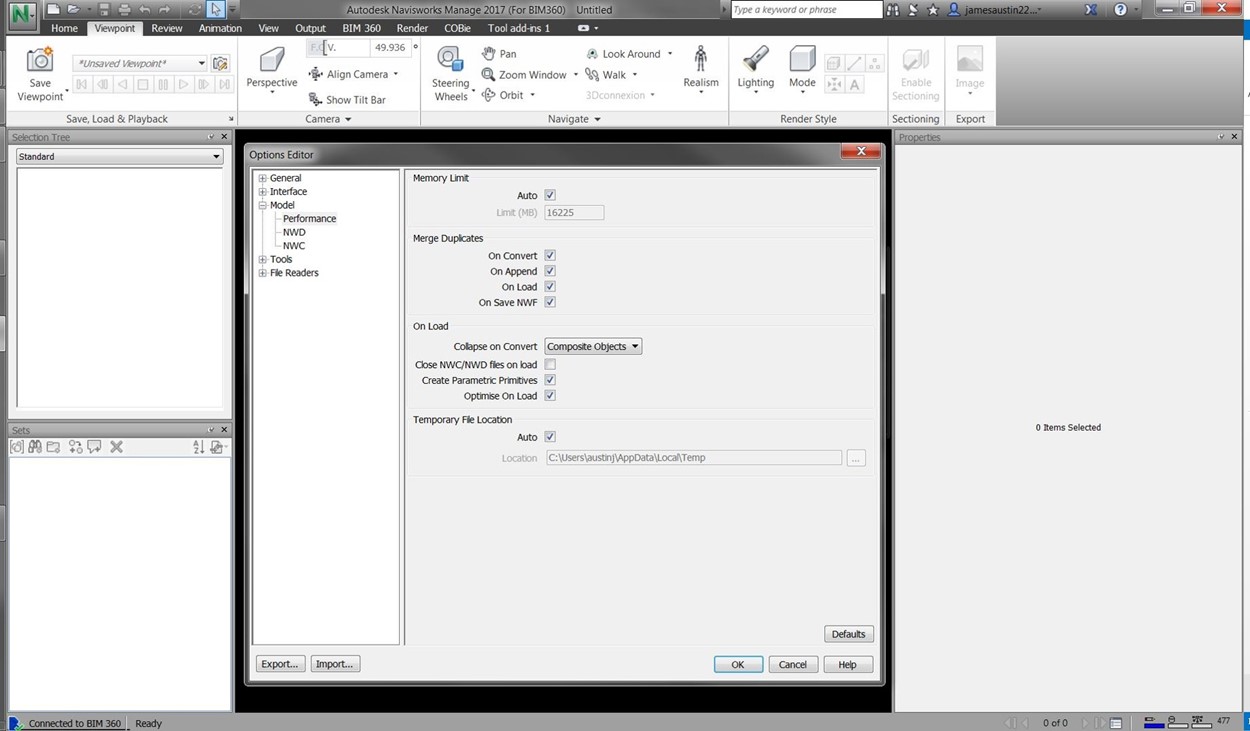
Navisworks 2018 is here
Annual product launch is always a busy time of year for the Navisworks team and this year has been no different. We’ve completed some interesting projects this year, so here we would like to introduce them to you in some detail. You’ve asked us to improve our connectivity and our interoperability and we heard you! Navisworks 2018 continues to improve our BIM workflow integration, with a particular focus on Revit, Recap 360 and IFC. Underpinning this are three key themes that describe our approach to developing Navisworks:
Current
Making sure that Navisworks stays up to date with the latest file formats and data types (e.g. we recently added extensive IFC improvements; and added support for .vue format)
Integrated
Integrating Navisworks with Autodesk cloud solutions (e.g. Navsiworks integration with BIM 360 Glue), plus integration with other Autodesk desktop solutions and complementary suites products (e.g. we invested in Navisworks integration with Revit via the underlay feature for Revit 2018; integration with Recap 360 Pro).
Quality
Fixing blocking bugs and significant regressions.
Revit 2018 & Navisworks 2018 – together at last!
Two years ago, with the release of AutoCAD 2016, we introduced the ability to bring your Navisworks model directly into the design app. Ever since, we have been working closely with our friends in the Revit team to offer the same capability with the release of Revit 2018. Using the ‘Coordination Model’ feature you will now be able to open NWC & NWD files and import them using model origin or shared coordinates. Once in Revit you can visualise the coordination model in plan, elevation, section or 3D view.
This was a major project that required us to fold Navisworks components (aka Navisworks Core Engine) directly into the Revit codebase.. We think it was worth the effort – now you can bring all the 60+ supported Navisworks formats directly into your Revit projects, with the ability to work with the same huge datasets that you can in Navisworks. Best of all, this performs the same as Navisworks and wont cripple your working environment in Revit.
This workflow could fundamentally change how your project teams collaborate. Rather than the design team or supply chain working independently and then coordinating with other team members after they have produced their designs, the Revit user will now be able to design within the context of the whole project view. This is a big step towards the holy grail of ‘clash avoidance’ – project team members creating coordinated, clash free data as a seamless part of the design and detailing process.
Further to this, the Revit folks are very excited that this unlocks the “direct context” workflow, where huge models, such as the city of Berlin shown below, can now be used as context for your projects at a scale that was previously impossible!
Fabrication parts in Navisworks
Autodesk continues to invest in building out our fabrication and detailing capability on the Revit platform to extend design development through fabrication level of detail and coordination to installation on site. Navisworks is a key part of this workflow, and we introduced support for the new Revit Fabrication parts properties as part of the 2018 release.

IFC Interoperability Enhancements
IFC is an increasingly important format and there are some significant improvements wrapped into the 2018 release. A completely new IFC file reader is integrated within Navisworks, which leverages the work that the Revit team have done in support of IFC.
This doesn’t mean that we now only support IFC from Revit (as some of you have asked). Now, Navisworks has the benefit of parity with Revit because we are using the same open source code to handle IFC files. This translates to greater consistency for your workflows and illustrates our investment into the support of the open source format.
You still have the option of using the older Navisworks IFC reader, but from 2018, the Revit IFC reader is now the default. Direct benefits of this include support for additional IFC property and object types, such as IFCSpace and IFCZone, plus PSets and improved IFC hierarchy handling. In addition, more than 80% of our backlog of IFC bugs were addressed.
Some of you will know that we introduced this as in its first release as an update last year. Since then, we have worked directly with our customers and made improvements to the handling of property data and organisation. We continue to listen out for more, so keep the feedback coming!

Recap 360 and Reality Capture workflows
Bring your Navisworks model directly into the ReCap 360 Pro desktop product (see the reality capture team’s blog here). This lets you visualize your as-designed data from Navisworks directly alongside your as built data in Recap 360 Pro ‘Real Views’, enabling a set of quality and progress-checking workflows by comparing planned and actual datasets. Alternatively, if you want to bring your ReCap models into Navisworks, the current integration will now support filtered ReCap points. This lets you work with a subset of the point cloud data, so speeding up review and verification workflows by importing just what you need for your process.
This video highlights the possibilities for construction workflows where progress scanning is blended with the as-designed data for immediate review and coordination purposes that will benefit the entire team.
General fixes, product stability and performance enhancements
We continue to invest in the stability, performance and quality of Navisworks – the new ‘optimize on load’ function has a dramatic impact on file size when working with previous versions of Navisworks as many of you still are. One customer reported that a Navisworks 2016 file of 4.7gb was reduced to just 200mb using this function– saving them several minutes every time the model was opened. We always encourage you to work with the latest versions, hopefully this is another reason why that’s such a good idea!

Navisworks and BIM 360
Using Navisworks together with Glue, Field and Layout opens up real value for construction teams. By leveraging the power of ‘connected BIM’ – where the desktop and the cloud work in unison, project teams can realise great savings in time and cost through greater collaboration and anytime, anywhere access to the as-designed data you create in Navisworks. This year we further simplified that workflow, by integrating the Field connection directly into the ribbon interface for Navsiworks. Now its even easier to pull field data through your project by connecting to BIM 360, and bring in progress or commissioning data into your Navisworks model for your analysis workflows.
Final thoughts…
So, that’s the Navisworks 2018 release. We hope you find the additions and improvements useful.
This year Amar spoke at Autodesk University about the Autodesk Desktop App, and showcased a new experience for updating our products, integrated into the desktop and providing a smoother way to access updates releases and the like. Navisworks 2018 is part of that, and as the business as a whole transitions into a subscription model as well, we’re looking into delivering more frequent updates and less ‘big bang’ annual releases that we have traditionally done. Whilst this changes the way we deliver updates, hopefully you can see from above that we’re continuing to work on the themes we’ve set out.
And of course in addition to our own work we continue to maintain our API. Navisworks alongside BIM 360 has an extensive API and we have many customers and partners that are building on the core product. We’ve seen many partners realise many workflows this way, and the Navisworks app store has several examples of some great functionality that leverage the API for specific workflows.
As always, we look forward to your feedback. Thanks and enjoy this release.
For more information on Navisworks:
Visit the Product Center: Navisworks
Visit Autodesk Knowledge Network: Products
The post Navisworks 2018 is here appeared first on ConvertBIM.